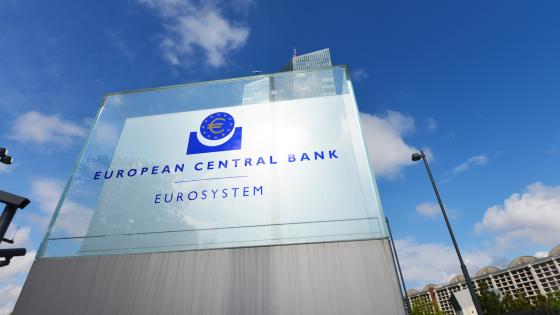Now that a European quantitative easing (QE) is almost a sure thing, the question is how it will be implemented. Implementation details are of first-order importance for the success of the programme. Fudges or opaque wording are to be avoided at all costs, because QE also works through expectations. Indeed, the experience of other major central banks suggests that announcement effects are key.
Risk-pooling amongst central banks?
Most of the attention so far has been on risk-sharing.
- Will the default risks be pooled through the ECB balance sheet?
- Or will sovereign debt be separately held by each national central bank, which would thus fully bear any losses?
The objections to risk-pooling are well known, and are mainly political (the recent opinion of the European Court of Justice has dispelled any legal concerns).
The benefits of risk-pooling are more subtle. One of the goals of QE is to restore confidence in debt sustainability in Southern Europe, narrowing sovereign spreads and reducing the cost of capital to firms. Achieving this goal would certainly be easier if risks were pooled, and not only for symbolic reasons. Suppose that, in the event of a default, governments are forced to recapitalise their central banks for the losses incurred. If the recapitalisation burden falls exclusively on the defaulting country, then essentially a government cannot default on its central bank. This means that the national central bank is a senior creditor relative to the market, and privately held debt becomes more risky. If instead the burden of recapitalising a national central bank is shared among all Eurozone governments, the seniority of debt held by central banks is correspondingly diluted. Hence risk-pooling through the ECB balance sheet contributes to reduce the residual risk born by private holders.
This benefit of risk-pooling should not be over-emphasised, however. A default by a major Eurozone country is such an extreme event that speculation on what exactly would happen in such circumstances is almost impossible. Would debt default be followed by recapitalisation of central bank losses? Perhaps central banks would remain with negative equity, as the Bank of Chile and the Czech National Bank did for several years. Would default lead to a Eurozone breakup or exit? Would it be associated with inter-government assistance as in the case of Greece? Answering these questions is almost impossible.
Importantly, the main effect of QE is to reduce the overall risk of default by raising aggregate demand and hence nominal income. Even if some of the remaining risk is shifted onto private debt holders, spreads will nevertheless shrink if default becomes less likely.
The size, speed, and duration of balance sheet expansion
Important as risk-sharing might be, this is not the central issue. What matters most is how many bonds will be bought, of what maturity, and how rapidly. Which central bank will hold them is a secondary issue.
QE increases aggregate demand through several channels:
- Liquidity and portfolio effects.
There is general agreement that the effects through the first channel will be small. In many countries credit demand remains very weak. Capital rather than liquidity is the main constraint on banks, and interest rates are already very low.
The exchange rate channel is more important, but here too there are some doubts: the Eurozone is not a small open economy (external exports are only 20% of GDP) and the euro has already weakened considerably. This leaves the fiscal implications of QE as one of the most important channels to raise aggregate demand.
As explained by Buiter (2014), when a central bank engages in QE it exchanges government debt for money, which is a non-redeemable liability. This relaxes the intertemporal government budget constraint. The reduction equals the full amount of QE – if the debt is held permanently. The reduction equals the interest payments – if debt is held only temporarily held or it is not rolled over at maturity.
This immediately implies that the fiscal consequences of QE are directly related to the duration of the balance sheet expansion of the central bank. A long-lasting expansion can be achieved by purchasing long-term debt and holding it until maturity, or rolling over the debt purchased.
Even if consumers are Ricardian, the relaxation of the government budget constraint leads to an immediate expansion of aggregate demand – if the expected path of future government spending remains unaltered. This expansion comes because consumers spend more in anticipation of their now larger permanent-disposable-incomes. If, as is plausible, Ricardian equivalence does not hold, the expansion of aggregate demand can only occur if the government exploits the additional fiscal space created by QE to run a larger deficit, through tax cuts or spending increases.
Hence, QE can be a powerful tool to stimulate aggregate demand. Just like ‘helicopter money’, these direct expansionary effects do not rely on portfolio adjustment, liquidity effects, or exchange rate movements (Reichlin et al. 2013).
- The key is that QE needs to be coordinated with fiscal policy and have permanent or long-lasting effects on the size of the central bank balance sheet.
Implications for QE in the Eurozone
Since an important channel through which QE works are announcements effects, the ECB ought to announce specific quantities and a clear horizon. For instance, €60 billion long-term government bonds purchased per month for at least one year – with the commitment to keep buying until the price level returns close to its previous 2% growth path. (For comparison, the Fed was buying $85 billion per month in its last QE effort.)
Ideally these bonds should be held by the ECB, and any risk mutualised.
- If consensus on the Governing Council required a compromise, it is better to give up on risk-pooling rather than on the size and duration of QE.
The amounts and the time frame (in terms of speed and duration) of the balance sheet expansion should not be watered down. It is far better to give up risk-pooling and do an open-ended QE, than to pool risks on a limited programme. Finally, the ECB should explain clearly that an accompanying fiscal expansion is crucial for the effectiveness of QE. Otherwise the bank could be blamed for a failure for which it is not responsible, no matter how well the monetary part of the programme is designed. This is the last tool that the ECB has to fight deflation. It should not be wasted through blunders or bad compromises.
References
Buiter, W (2014), “The Simple Analytics of Helicopter Money: Why it Works – Always”, Economics 8, August.
Reichlin, L, A Turner, and M Woodford (2013), “Helicopter money as a policy option”, VoxEU.org, 20 May.


